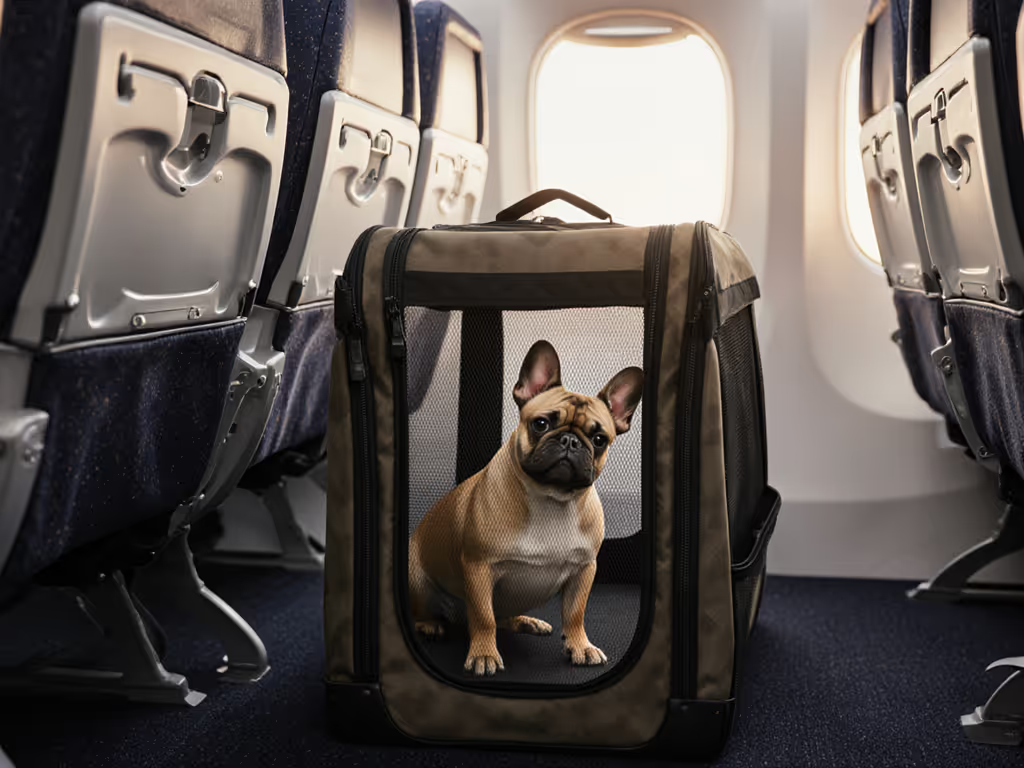
Senior Cat Carriers: Hard vs Soft Gentle Entry Guide
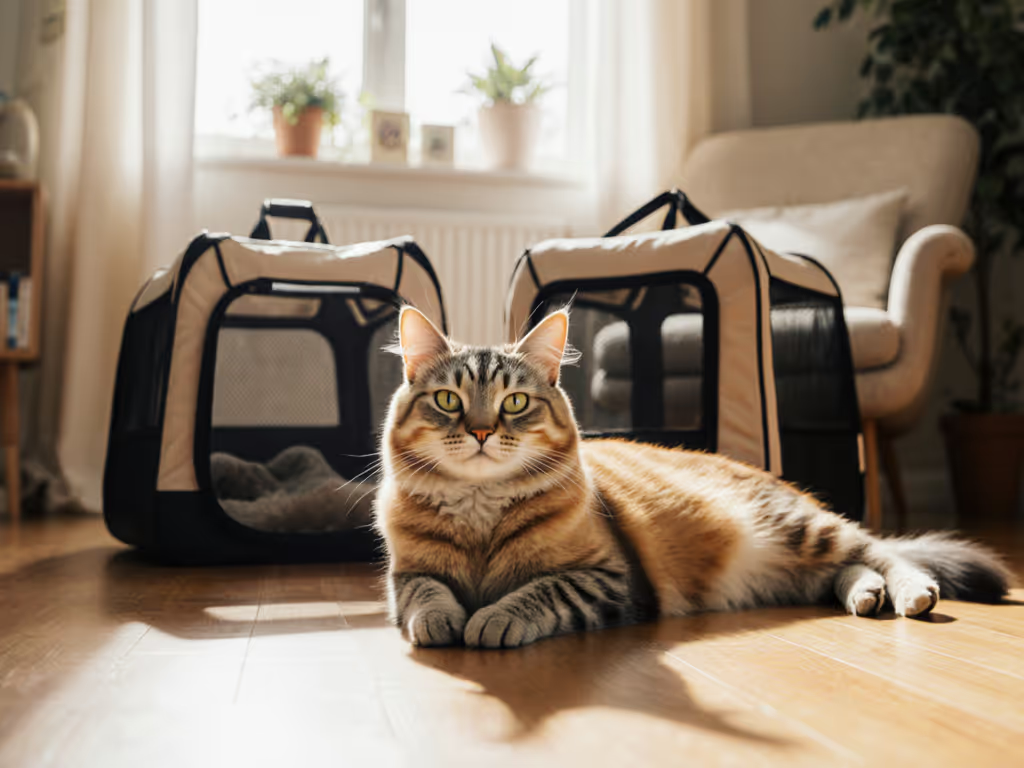
When your senior companion faces their first geriatric vet visit or trip, the senior cat carrier comparison transcends simple logistics, it is a meditation on comfort, dignity, and trust. The hard vs soft senior cat carriers decision isn't just about materials; it's about honoring your aging friend's changing body and temperament. What feels like a straightforward choice becomes a profound act of care when your cat's joints ache, vision dims, or anxiety flares at unfamiliar sensations. Calm begins long before you zip the door closed.
Why Standard Carriers Fail Senior Cats
We've all witnessed the heartbreaking scene: a once-adventurous hunter frozen at the carrier threshold, refusing to enter despite gentle coaxing. For senior cats, the journey isn't just about the destination, it is navigating a landscape of physical limitations and heightened sensitivities. Osteoarthritis affects nearly 90% of cats over 12, making stiff plastic floors unbearable and high entry points daunting. For orthopedic support picks and setup tips, see our arthritis-friendly carrier comparison. Diminished hearing and eyesight amplify anxiety in enclosed spaces. Cognitive changes might cause confusion about how to respond to traditional carriers.
Consider Mrs. Jenkins, a 17-year-old tabby who'd always boarded her carrier with grace, until her spinal arthritis made jumping painful. Her guardian tried increasingly desperate measures: lifting her forcefully, placing treats inside the closed carrier, even wrapping her in towels. Each attempt increased her distress, turning vet visits into traumatic experiences that affected her behavior for days afterward. This isn't disobedience: it's a cat communicating pain and fear through avoidance.
The emotional toll on caregivers is equally real. Watching your beloved companion suffer while trying to keep them safe creates what veterinary behaviorists call "caregiver distress syndrome." You're caught between necessary medical care and the desire to avoid causing distress. Conventional wisdom suggests "just get them used to it," but this ignores the physiological reality of aging bodies.
Hard vs Soft: The Senior Cat Perspective
Hard-Sided Carriers: Structure with Sensitivity
Hard plastic carriers offer undeniable safety benefits (especially for car travel where crash protection matters most). But for senior cats, standard hard carriers often present insurmountable barriers:
- Stiff entry points requiring jumping or awkward maneuvering
- Cold, unyielding surfaces that aggravate arthritic joints
- Limited visibility that heightens anxiety in cats with partial vision loss
- Abrupt closures that trigger panic in cats with hearing changes
The solution is not to reject hard carriers entirely; it is to seek designs that accommodate senior limitations. Look for carriers with:
- Low-threshold entries (under 4 inches high)
- Removable padded bases that cradle aging joints
- Top-loading access that eliminates the need to lift fragile bodies
- Gradual closure mechanisms that won't startle sensitive hearing

Van Ness Calm Carrier
The Van Ness Calm Carrier addresses several senior-specific challenges with its patented sliding drawer system. Instead of forcing your cat to jump into position or lifting them awkwardly, the drawer extends to meet your cat at ground level (a gentle approach that respects senior cat mobility support). The wire door provides better visibility for partially sighted seniors while remaining secure, and the high-impact plastic construction ensures safety without compromising accessibility. For arthritis-prone cats, the removable padded base (sold separately) creates a cushioned surface that eases pressure on sensitive joints during travel.
Soft-Sided Carriers: Comfort with Compromises
Soft carriers promise comfort with their padded interiors and flexible sides. But for senior cats, these advantages often come with hidden risks:
- Less structural support that can collapse when cats push against sides
- Mesh panels that become escape routes for determined seniors
- Insufficient padding that doesn't accommodate arthritic joints
- Zippers and Velcro that create sensory overload with their noise
Yet properly selected soft carriers offer significant advantages for geriatric travel:
- Gradual entry points that eliminate jumping requirements
- Familiar fabric textures that provide comfort through scent retention
- Expandable privacy panels that reduce visual overstimulation
- Machine-washable components essential for seniors with incontinence

SPOT Doc & Phoebe's 3-in-1 Pet Carrier
The SPOT Doc & Phoebe's 3-in-1 Sleep & Go Carrier shines as an arthritis-friendly cat carrier option with its thoughtful design. The soft-sided construction features multiple entry points (top, front, and side access), allowing you to position the carrier so your senior cat can walk in rather than jump. The included washable cushion provides essential joint support, while the removable privacy panel creates a den-like environment that reduces stress for anxious seniors. Especially valuable is its transformation capability: as a permanent home base, it becomes a familiar safe space long before travel day, addressing the core need for predictable environments in geriatric cat travel. To keep soft interiors fresh between vet visits, follow our carrier deep-clean guide.
The Critical Middle Ground: Tempered Choices for Tempered Cats
When comparing carriers for senior cats, avoid the false dichotomy of "hard vs soft" and instead ask:
Does this carrier accommodate my cat's specific mobility limitations?
Does it offer multiple entry options that respect current physical capabilities?
Can I gradually introduce it through measured steps that honor their sensory needs?
The right carrier supports your cat's natural movement patterns rather than forcing adaptation to human convenience. A comfort-focused approach for elderly cats considers not just the journey itself, but the acclimation process that precedes it.
Gentle Acclimation: Your Senior Cat's Entry Protocol
A carrier should lower arousal, not contain it by force. For step-by-step desensitization, follow our carrier introduction guide. When introducing a new carrier to a senior cat, traditional "treat-in-carrier" methods often fail because they ignore the physical discomfort that may be triggering resistance.
The 21-Day Senior Acclimation Calendar
Week 1: Carrier as Home Base
- Place carrier (fully open, door removed) in your cat's favorite resting area
- Add familiar blanket with your scent and their scent
- Position food bowl just outside the entrance
- Measure success: Cat rests within 2 feet of carrier for 20+ minutes daily
Week 2: Gradual Entry
- Place treats just inside carrier entrance (no need to go deeper)
- Use carpet runner to create gentle ramp to carrier floor
- Practice "touch and retreat" - gently stroke cat while they're near carrier
- Measure success: Cat places front paws inside carrier voluntarily 3x daily
Week 3: Full Entry & Closure
- Place favorite blanket inside carrier for joint support
- Use privacy panel to create den-like environment
- Practice brief closures (5 seconds) with cat fully inside
- Gradually increase closure time as comfort levels rise
- Measure success: Cat enters carrier when called and accepts 30-second closures
This graduated timeline accommodates the slower learning pace of senior cats while respecting physical limitations. Never force entry; instead, build confidence through micro-successes that honor your cat's current capabilities. Remember: For behavior-first selection help, explore feline carrier psychology. slow is smooth, smooth is calm.
Making Your Final Choice: A Decision Framework
Rather than choosing between hard and soft carriers generally, match your selection to your cat's specific needs:
Choose Hard-Sided If:
- Your cat requires car travel with crash protection
- They're prone to chewing through soft materials
- You need maximum security for vet visits
- They respond well to structured environments
Choose Soft-Sided If:
- Your cat has significant joint pain requiring cushioning
- They're visually impaired and need familiar textures
- You can commit to thorough acclimation beforehand
- Travel is primarily short-distance (vet visits)
Essential Features Regardless of Type:
- Low entry point (under 4 inches)
- Removable orthopedic padding
- Multiple access points (top, front, side)
- Quiet closure mechanisms
- Privacy control options
- Machine-washable components
Your Next Gentle Step
Your journey toward stress-free senior travel begins today, not with purchasing a carrier, but with observation. Spend 24 hours noting your cat's natural movement patterns: how they rise from resting positions, preferred resting surfaces, and reactions to confined spaces. Document these observations using our downloadable Senior Movement Assessment Guide.
Then, select just one carrier feature to address first (perhaps a lower entry point or additional padding). Introduce this element gradually through the 21-day protocol, celebrating each micro-victory. Your patience transforms transportation from trauma to trust. Remember that every senior cat deserves travel that honors their dignity, and every compassionate choice you make builds bridges of trust that span their golden years.
slow is smooth, smooth is calm
Related Articles

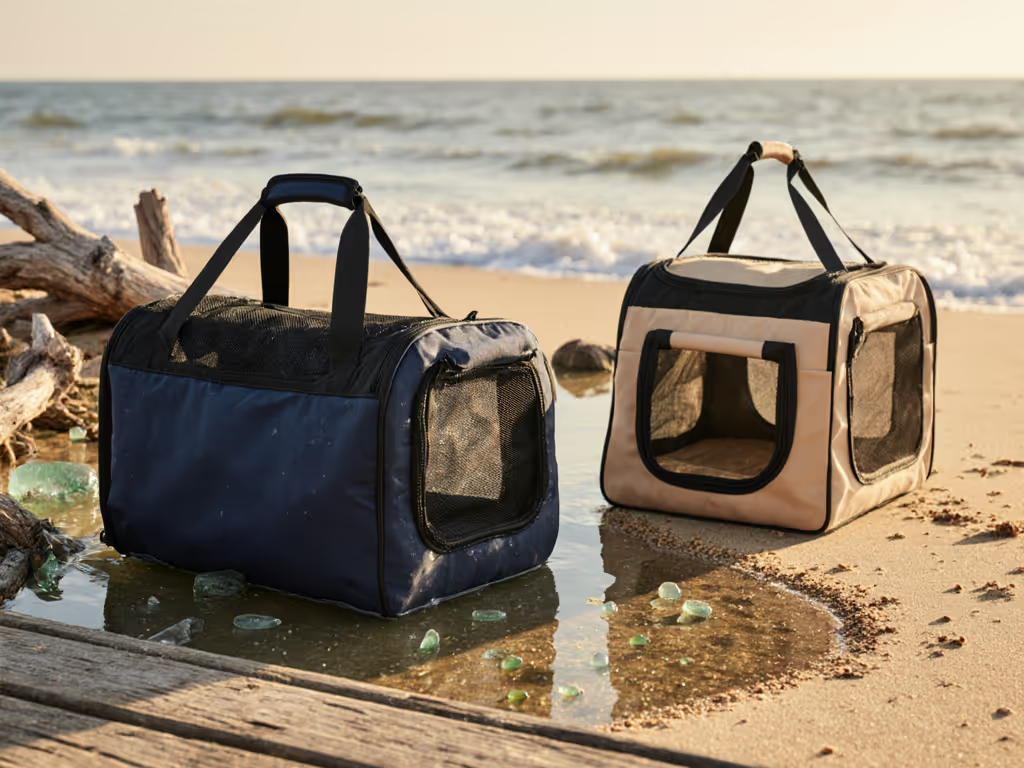
Waterproof vs Sand-Resistant Pet Carriers: Beach Travel Tested
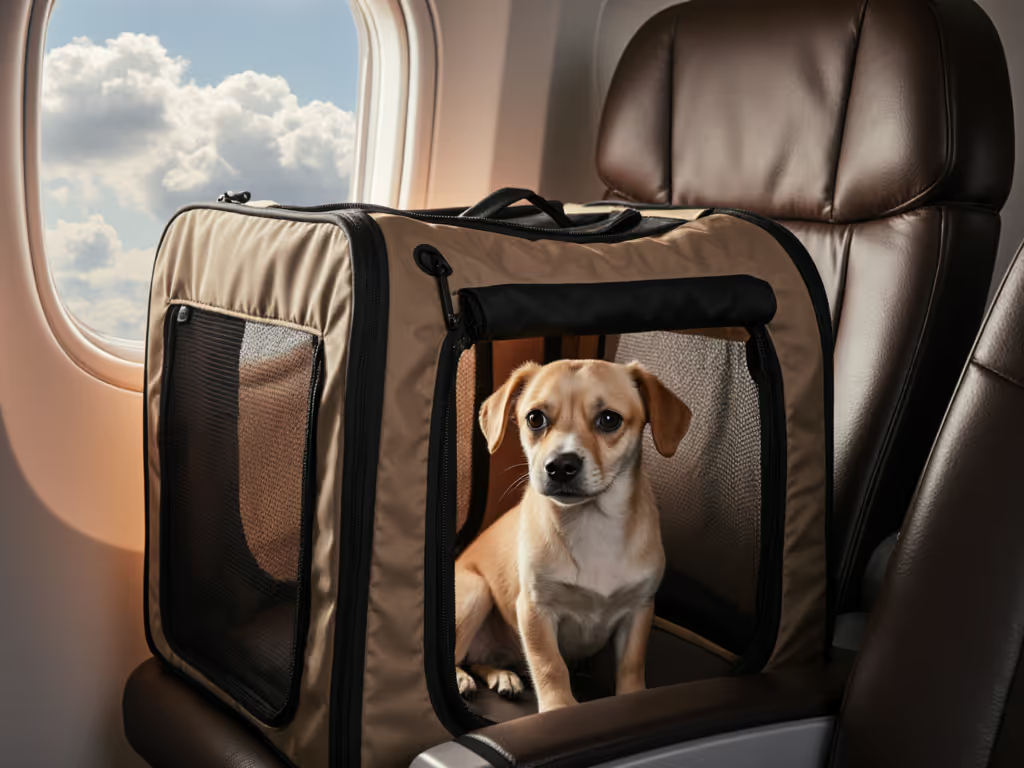
Sensory-Friendly Pet Carrier Guide: Compliant Solutions for Anxious Pets
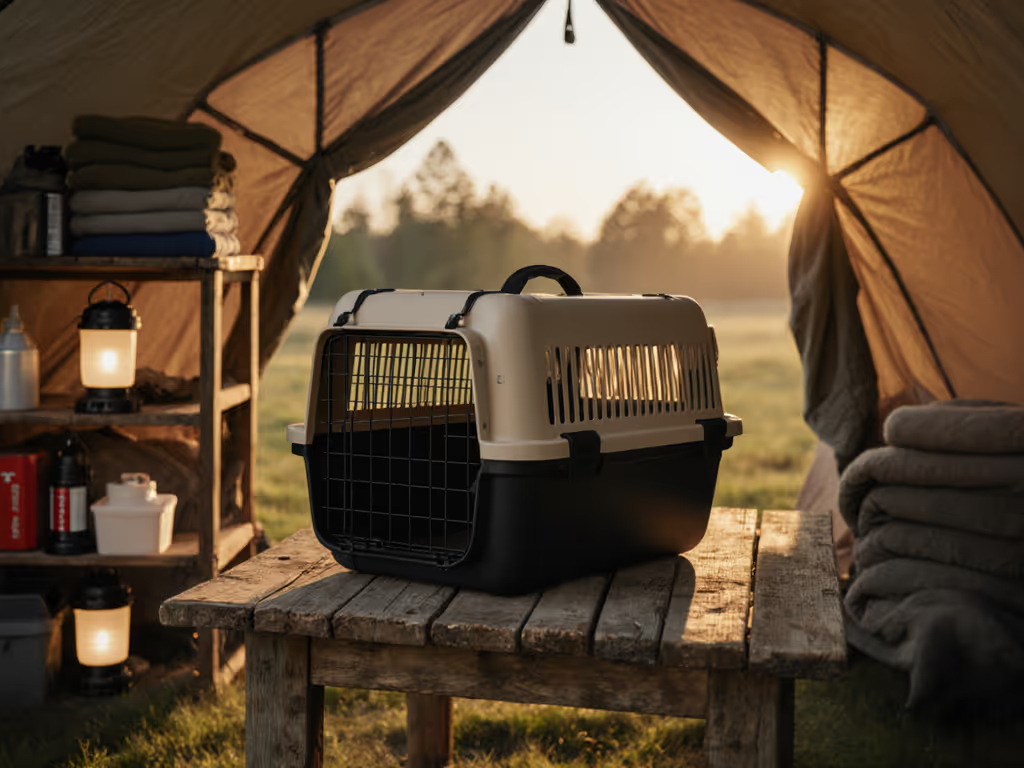
Disaster Pet Carrier: Stay Calm in Crisis
